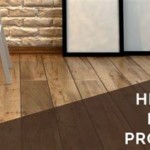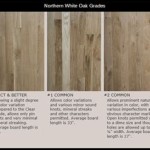Foam Under Wood Flooring: Essential Aspects You Should Know
Installing wood flooring can be a significant investment. To ensure its longevity, selecting the right underlayment is crucial. Foam underlayment provides cushioning, moisture protection, and sound insulation, enhancing the performance and lifespan of your wood flooring. Here are some essential aspects to consider:
Cushioning and Support
Foam underlayment acts as a cushion between the subfloor and wood flooring. It absorbs impact from foot traffic and reduces stress on the flooring, minimizing the risk of cracking or warping. The cushioning also improves underfoot comfort, making it more pleasant to walk on.
Moisture Protection
Moisture is a common enemy of wood flooring. Foam underlayment creates a barrier between the subfloor and wood flooring, preventing moisture from wicking up and damaging the wood. This protection helps maintain the integrity of your flooring over time.
Sound Insulation
Noise can be disruptive in any home. Foam underlayment provides excellent sound insulation, reducing both impact noise (from footsteps or dropped objects) and airborne noise (from nearby rooms or outside sources). This creates a more peaceful and comfortable living environment.
Types of Foam Underlayment
Different types of foam underlayment are available, each with its own benefits. Polyethylene (PE) foam is a cost-effective option with good cushioning properties. Polystyrene (EPS) foam is a denser and more durable material that offers excellent support and moisture resistance. Cross-linked polyethylene (XLPE) foam is a high-performance material with exceptional cushioning, sound insulation, and moisture protection.
Choosing the Right Thickness
The thickness of foam underlayment you choose will depend on several factors, including the type of wood flooring, subfloor condition, and desired level of cushioning. Generally, thicker underlayment provides better cushioning and sound insulation, while thinner underlayment may be more suitable for floating floors or subfloors that are in good condition.
Installation Considerations
Proper installation is essential for optimizing the benefits of foam underlayment. Ensure the subfloor is clean, dry, and level. Roll out the underlayment over the subfloor with the joints overlapping by at least 4 inches. Use a sharp knife or scissors to trim around obstacles and corners. Secure the underlayment with tape or adhesive if necessary before installing the wood flooring.
Foam underlayment plays a vital role in the performance and longevity of wood flooring. By understanding the essential aspects, you can make an informed decision and choose the right underlayment for your needs, ensuring a beautiful, durable, and comfortable floor for many years to come.

The Advantages Of Poly Foam Underlay Blog Floorsave

Whisper Walk Foam Underlayment Is Ideal For Laminate Flooring Engineered Wood And Rigid Vinyl Plank Tile Do Not Use Under Sheet Or Other Soft Backed Materials It Has

The Complete Guide To Floor Insulation Eco Experts

Ecotec Floor Foam Insulation Kit Concrete

Acoustic Foam Laminate And Wood Flooring Underlay 2mm

Faux Hardwood Floor Interlocking Foam Tiles 25 Pack Gym Room At Home

Wood Laminate Flooring Underlay Foam Comfort White 2mm

A Best Practice Approach To Insulating Suspended Timber Floors Ecological Building Systems

White Foam Underlay Mulveys Of Dundrum

Spray Foam Floor Insulation A Beginner S Guide To Diy Kraken Bond Monster Of Tough Jobs








